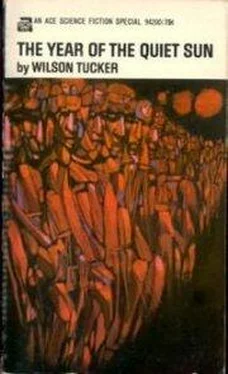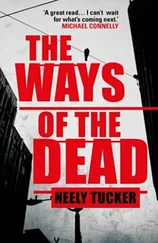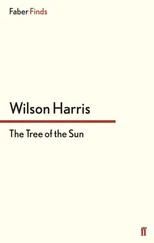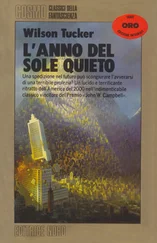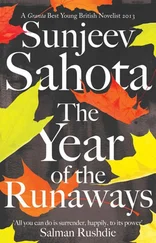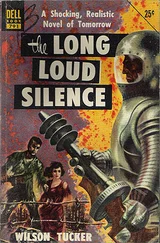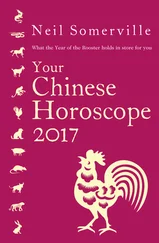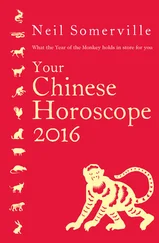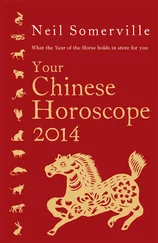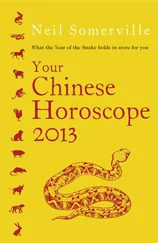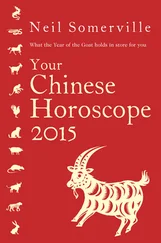Wilson Tucker - The Year of the Quiet Sun
Здесь есть возможность читать онлайн «Wilson Tucker - The Year of the Quiet Sun» весь текст электронной книги совершенно бесплатно (целиком полную версию без сокращений). В некоторых случаях можно слушать аудио, скачать через торрент в формате fb2 и присутствует краткое содержание. Год выпуска: 1970, ISBN: 1970, Издательство: Ace Books, Жанр: Фантастика и фэнтези, на английском языке. Описание произведения, (предисловие) а так же отзывы посетителей доступны на портале библиотеки ЛибКат.
- Название:The Year of the Quiet Sun
- Автор:
- Издательство:Ace Books
- Жанр:
- Год:1970
- ISBN:0-441-94201-6
- Рейтинг книги:3 / 5. Голосов: 1
-
Избранное:Добавить в избранное
- Отзывы:
-
Ваша оценка:
- 60
- 1
- 2
- 3
- 4
- 5
The Year of the Quiet Sun: краткое содержание, описание и аннотация
Предлагаем к чтению аннотацию, описание, краткое содержание или предисловие (зависит от того, что написал сам автор книги «The Year of the Quiet Sun»). Если вы не нашли необходимую информацию о книге — напишите в комментариях, мы постараемся отыскать её.
Won retrospective John W. Campbell Memorial Award in 1976.
Nominated for Nebula Award for Best Novel in 1970.
Nominated for Hugo Award for Best Novel in 1971.
The Year of the Quiet Sun — читать онлайн бесплатно полную книгу (весь текст) целиком
Ниже представлен текст книги, разбитый по страницам. Система сохранения места последней прочитанной страницы, позволяет с удобством читать онлайн бесплатно книгу «The Year of the Quiet Sun», без необходимости каждый раз заново искать на чём Вы остановились. Поставьте закладку, и сможете в любой момент перейти на страницу, на которой закончили чтение.
Интервал:
Закладка:
Chaney said: “Is this another of Seabrooke’s idiotic ideas?”
“The matter is germane, Mr. Chaney.”
“That matter is not germane, Miss van Hise. This has absolutely nothing to do with the Indic report, with the statistical tables, with the future surveys — nothing!”
“Mr. Seabrooke thinks otherwise.”
Angrily: “Gilbert Seabrooke has holes in his head; his Bureau has holes in its measuring jars. Please tell him I said so. He should know better than to—” Chaney came to a full stop and glared at the young woman. “Is this another reason why I was chosen for the survey team?”
“Yes, sir. You are the only authority.”
Chaney repeated the Aramaic word, and Saltus laughed despite himself.
She said: “Sir, Mr. Seabrooke believes it may have some slight bearing on the future survey, and we should be familiar with it. We should be familiar with every facet of the future that comes to our attention.”
“But this has nothing to do with a future Chicago!”
“It may, sir.”
“It may not! This is a fantasy, a fairy tale. It was written by a dreamer and told to his students — or to the peasants.” Chaney sat down, containing his anger. “Katrina: this is a waste of time.”
Saltus broke in. “More midrash , mister?”
“ Midrash ,” Chaney agreed. He looked at the Major. “It has no biblical connection, Major. None whatever. This is a minor piece of prophecy fitted into a fantasy; it’s the story of a man who lived twice — or of twins, the text isn’t clear — who swept dragons from the sky. If the Brothers Grimm had -discovered it first, they would have published it.”
Katrina said stubbornly: “We are to study it.”
Chaney was equally stubborn. “The turn of the century is only twenty-two years away but this document is addressed to the far future, to the end of the world. It depicts the end — the last days. I called it Eschatos , meaning ‘The End of Things.’ Does Seabrooke really think the end of the world is only twenty-two years away?
“No, sir, I’m sure he doesn’t believe that, but he has instructed us to study it thoroughly in preparation for the probe. There may be a tenuous connection.”
“What tenuous connection? Where?”
“Those references to the blinding yellow light filling the sky, for one. That may be an allusion to the war in Southeast Asia. And there were other references to a cooling climate, and a series of plagues. The dragons may have a military connotation. Mr. Seabrooke mentioned specifically your point on Armageddon, in relation to the Arab-Israeli war. There are a number of incidents, sir.”
Chaney permitted himself an audible groan.
Saltus said: “Hoist by your own petard, mister. I feel for you.”
Chaney knew his meaning. The reviewers and the Moresbys of the world didn’t want to believe his English translation of the Revelations scroll, but it appeared to be authentic. Now, Seabrooke was making noises like he wanted to believe Eschatos , or was willing to believe it.
Impatiently: “The blinding yellow light in the sky has nothing to do with the Asian war. In Hebrew fiction it was a romantic promise of health, wealth, of peace and prosperity for all. The yellow light is a benign sun, spilling contentment on the earth. The old prophet was saying simply that at last the earth belonged to men, to all men, and eternal peace was at hand. Utopia. No more than that.
“That utopia was to come after the end of things, after the last days, when a brand new world under a golden sun would be given to the peoples of Israel. It is a prophecy as old as time. It has nothing to do with our war in Asia, or the color of any soldier’s skin.” Chaney pointed to the door. “How cold is it out there now? This is swimming weather. And where are the plagues? Have you ever seen a dragon?”
Saltus: “And where is Armageddon?”
“The proper name is Har-Magedon. It’s a mountain in Israel, Commander, the mountain of Megiddo rising above the Plain of Esdraelon. And the prophecies are a little too late — all the prophecies. Any number of decisive battles have already happened there and vanished into history. It was a favorite locale for the old fictioneers; it had such a bloody history it was firmly fixed in the native mind, it was a good site for still another story.”
“Mister, you sure know how to throw cold water.”
“Commander, I believe in being realistic; I believe in facts, not fantasy. I believe in statistics and firmly rooted continuities, not prophecies and dreams.” Chaney stabbed the copied document with his finger. “The man who wrote this was a dreamer, and something of a plagiarist. Several passages were lifted from Daniel, and there is a hint of Micah.”
“Do you think it’s a fake?”
“No, definitely not. I had to make sure of that at the beginning. The scroll was found in the usual way: by university students searching old jars, in cave Q12. It was wrapped in the usual rotting linen of a type woven at Qumran, and that linen was submitted to the carbon-14 dating process — the tests were made at the Libby Institute in Chicago. Repeated tests established an age of nineteen hundred years, plus or minus seventy, for the linen.
“But we don’t accept that as proof that the scroll inside the linen is of the same age. There are other methods of dating a manuscript.” He bent over the copies and placed a finger on the opening line. “This text is written with square letters and contains no vowels — none at all. It reads from right to left down the page, right to left across the scroll. Square lettering came into use about the third century before Christ; before that a more flowing script was used but afterwards a square was common.
Chaney caught a movement from the corner of his eye. Major Moresby unbent, to peer closely at the copies.
“The Hebrew language used at that time had only twenty-two letters, and they were all consonants. Vowels hadn’t been invented, and wouldn’t be for another six or seven hundred years. This text contains the twenty-two standard consonants but nowhere on the scroll — above or below the lines, or within the words, or the margins — is there a sign to indicate where a consonant becomes a vowel. That was significant.” He glanced at Moresby and discovered he had the man’s close attention. “But there were other clues to work with. This scribe was familiar with the writings of Daniel, and of Micah. The text is not pure Hebrew; several Aramaic touches have slipped in — a word or a phrase having more impact than a Hebrew equivalent. The old Greek word eschatos doesn’t appear, but it should have. I was surprised to find it missing, for the scribe had a knowledge of Greek drama, or melodrama.” Chaney made a gesture. “The earliest date was about 100 B.C. It was not written before that.
“Setting a closing date isn’t nearly as difficult, because the scribe betrays the limit of his knowledge. He was not alive and writing in 70 A.D. The text contains three direct references to a Temple, a great white Temple which appears to be the center of all important activity. There were many temples in Palestine and in the surrounding lands, but only one Temple : the holiest of holy places, the Temple of Jerusalem. In this story the Temple is still standing, still in existence, and is the center of all activity. But in history that Temple stopped. The Roman armies invaded Judaea and destroyed it utterly in 70 A.D. In the course of putting down a Hebrew revolt they tore it apart to the last stone, and the Temple was no more.”
Major Moresby said: “That was foretold.”
Chaney ignored him. “So the date of composition was pinned down: not earlier than 100 B.C. and not later than 70 A.D. A satisfactory agreement with the radiocarbon tests. I’m satisfied the scroll is authentic, but the tale it tells is not — the story is pure fiction, built on symbols and myths known to the ancient Hebrews.”
Читать дальшеИнтервал:
Закладка:
Похожие книги на «The Year of the Quiet Sun»
Представляем Вашему вниманию похожие книги на «The Year of the Quiet Sun» списком для выбора. Мы отобрали схожую по названию и смыслу литературу в надежде предоставить читателям больше вариантов отыскать новые, интересные, ещё непрочитанные произведения.
Обсуждение, отзывы о книге «The Year of the Quiet Sun» и просто собственные мнения читателей. Оставьте ваши комментарии, напишите, что Вы думаете о произведении, его смысле или главных героях. Укажите что конкретно понравилось, а что нет, и почему Вы так считаете.
